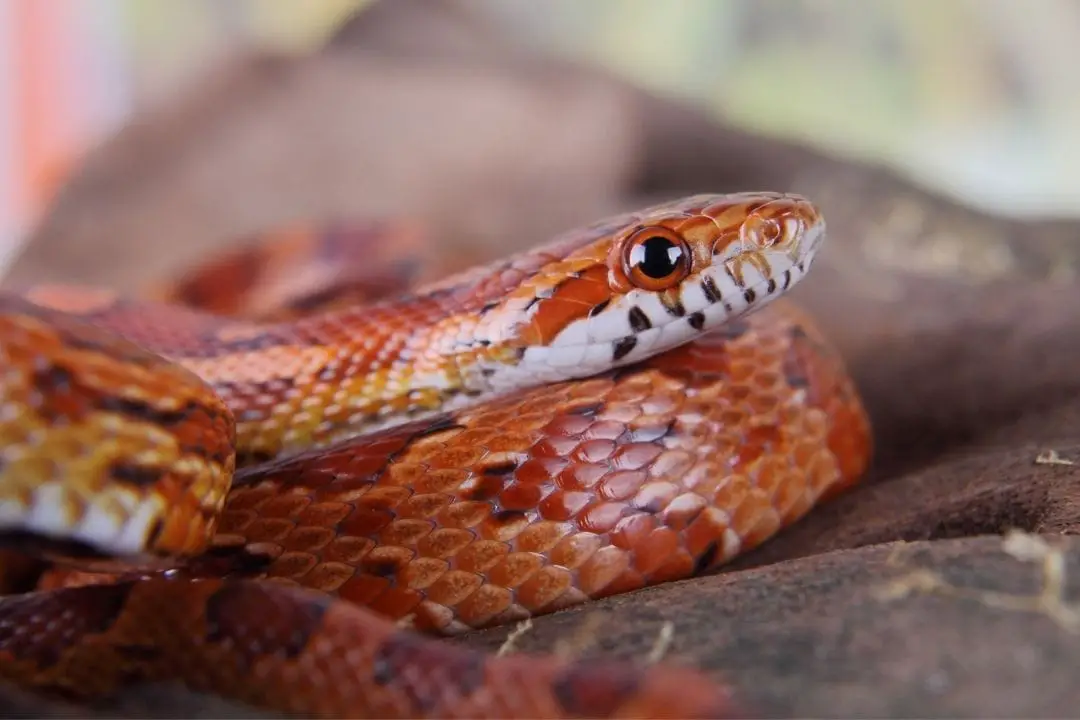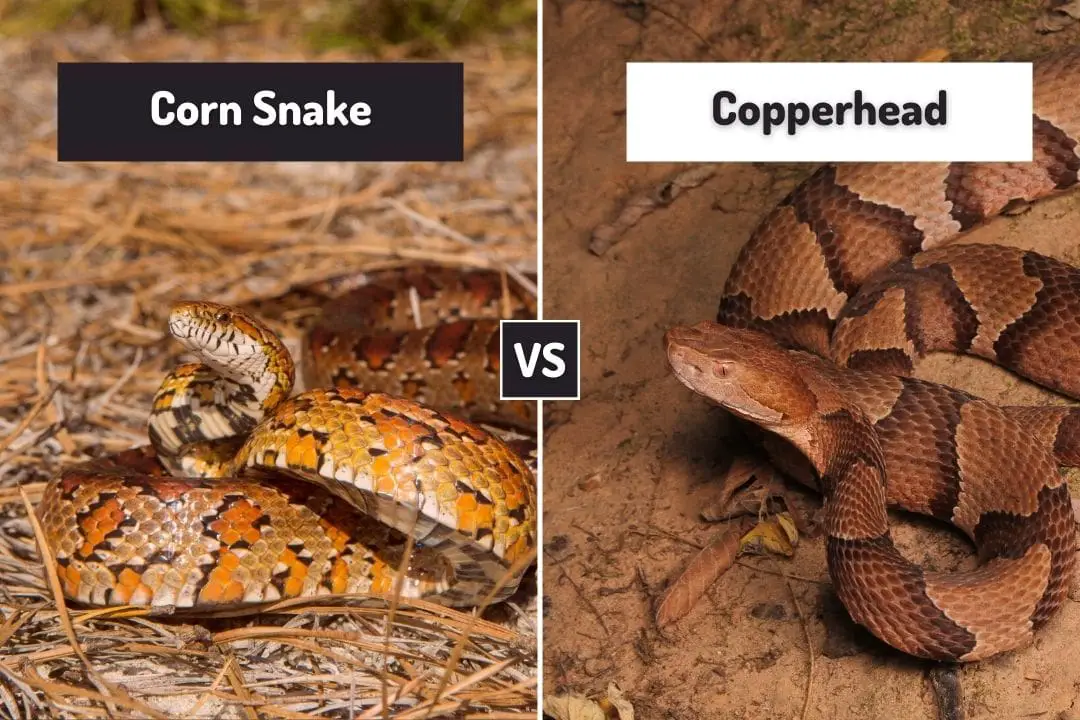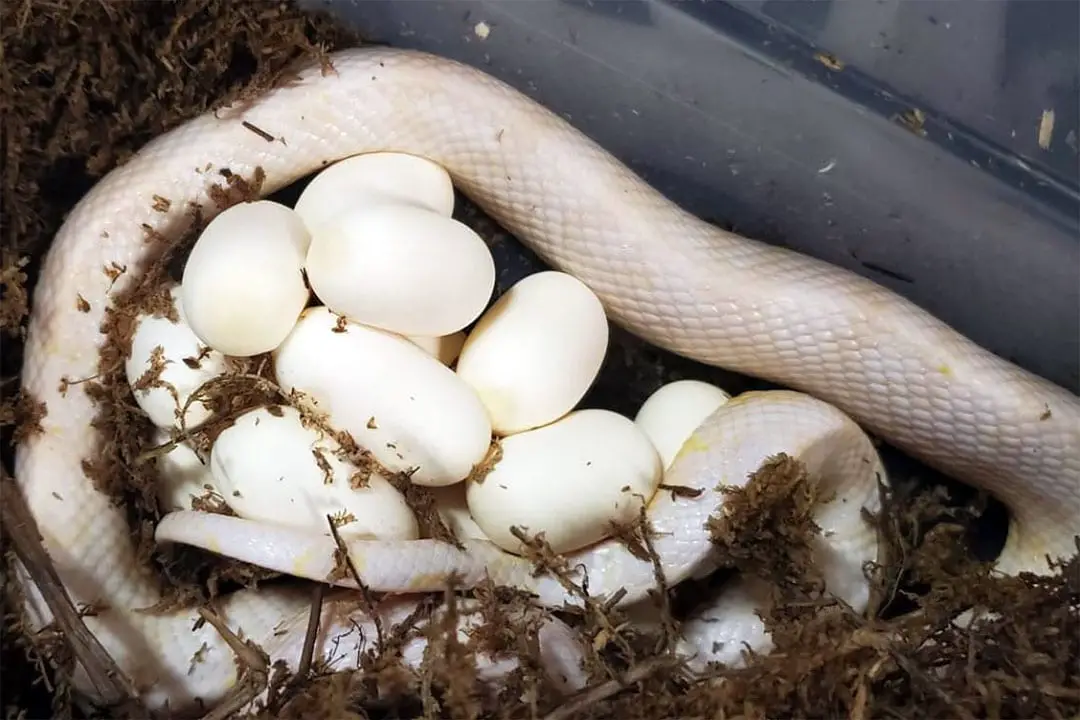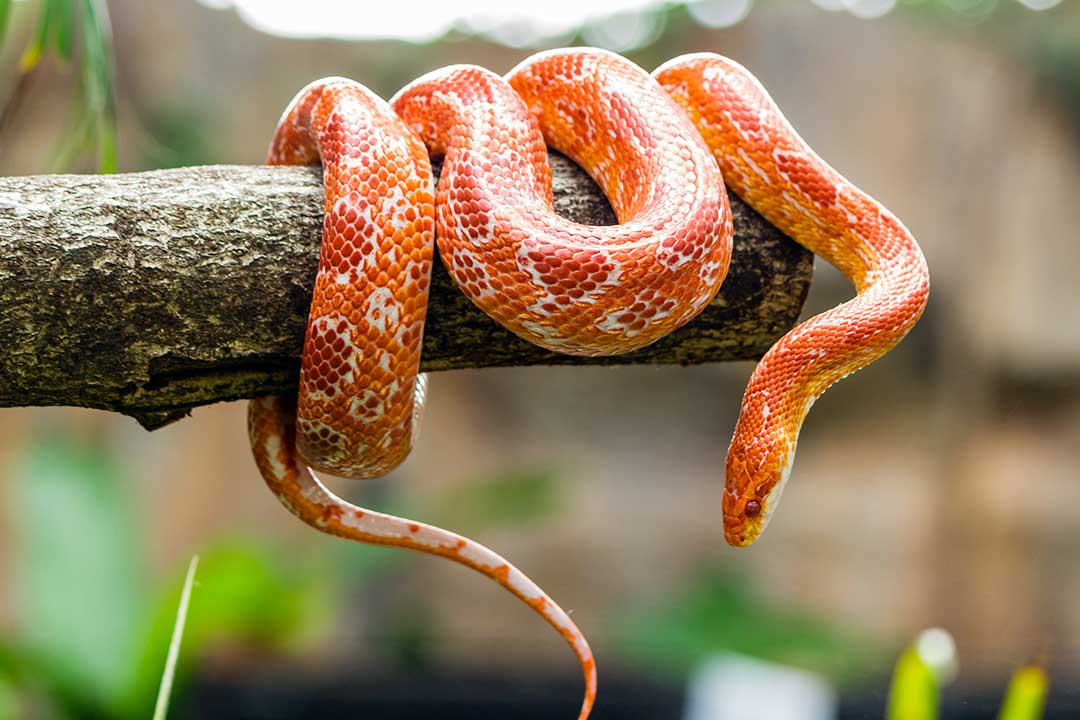If you are currently considering a corn snake as a pet, you may be wondering how long corn snakes live in captivity.
The average lifespan for a corn snake is 15-20 years.
Corn Snake Longevity
Corn snakes that are properly cared for will live between 15 and 20 years. In captivity, the quality of care is generally what determines how long the snake will live. Infections, poor conditions, and stress can all reduce lifespan.
By committing to proper care, your snake will live longer. Read on to learn both about the wild conditions and what proper care looks like.
Corn Snakes in the Wild
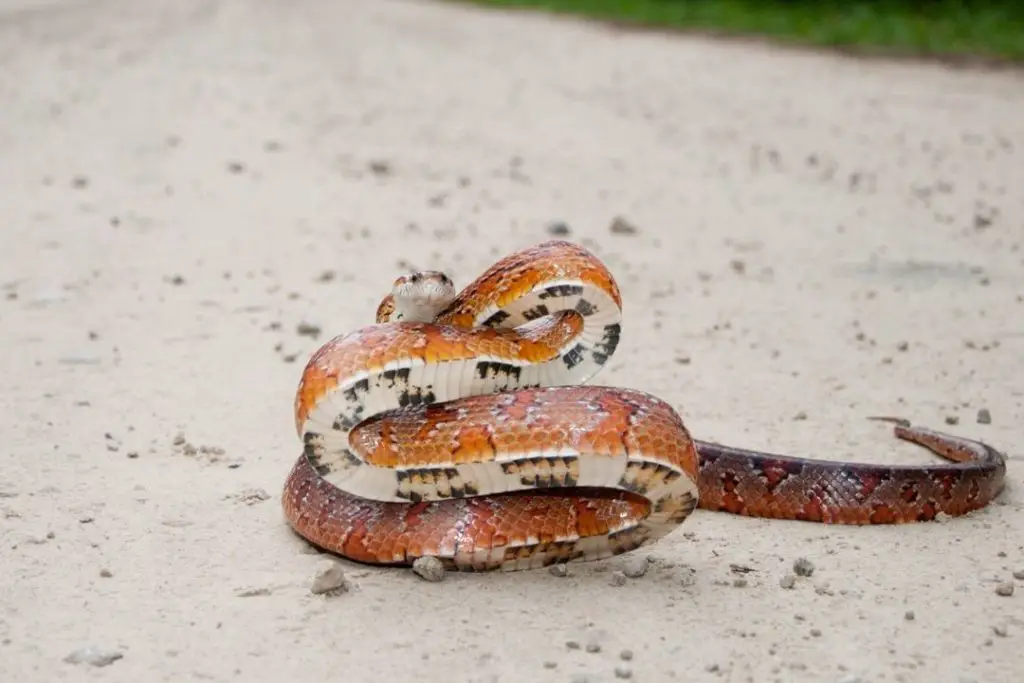
Corn Snakes (Pantherophis guttatus) are a species of rat snake native to North America. Their home range is in the Southeastern United States. They can be found from New Jersey to the Florida Keys.
They are most closely related to the California kingsnake, and can even produce fertile hybrids with this species in captivity. In the wild, they have a wide range of habitats.
Corn snakes are frequently found on farms, but they also can be found in overgrown fields and tree-filled areas. They will begin to climb trees and other structures at four months of age.
They typically become sexually mature at a size of 30 inches (75cm) or a weight of 250g. This is in line with other snakes in the colubrid family that become sexually mature because of size rather than age.
They have a wide diet in the wild. The majority of the diet consists of small rodents, but they have been known to eat other reptiles, amphibians, and even birds. In colder climates, corn snakes brumate during the winter.
In warmer climates, they simply become less active during cooler months and eat less frequently. In the wild, they live for 6-8 years.
Corn Snakes in Captivity
Thanks to a gentle disposition and ease of care, corn snakes are the second most popular species of pet snake. They are readily available in the pet trade. If you are selecting one, go for a captive-bred animal, since they are more likely to be healthy.
Wild-caught animals can have illnesses or parasites.
Habitat
Young corn snakes may live in plastic shoe boxes, but adult snakes need more room. You want an escape-proof aquarium or vivarium that allows the snake to stretch out their full length.
You want some height since many corn snakes enjoy climbing. Here is a basic list of what an adult corn snake’s habitat should look like.
- Tank: At least 20 gallon escape-proof aquarium
- Substrate: Cypress mulch or Aspen shavings, no pine or cedar
- Temperature: 85 degrees on the warm side, low 70s on the cool
- Humidity: 40 to 50 percent
- Decorations: Branches for climbing, hides on the warm and cool sides
You want to give your snake plenty of room for natural behaviors. For substrate, you can use newspaper, but you will need additional hides. Corn snakes do enjoy exploring their environments, but they also need to feel secure. A series of good hides can make your snake feel more secure.
Corn snakes prefer being able to burrow, so try to only use newspaper if you are monitoring for any signs of gastrointestinal illness.
Clean water should always be available in a container that will allow the snake to fit. It should be too heavy to flip, and positioned in the corner so the snake can find it easily.
Replace the water at least every 3 days or if fouled. If your snake flips the water, make sure to clean and dry out the habitat. Too much humidity can lead to infections for your snake. Proper care is the best way to avoid any health problems that will shorten its life.
Diet
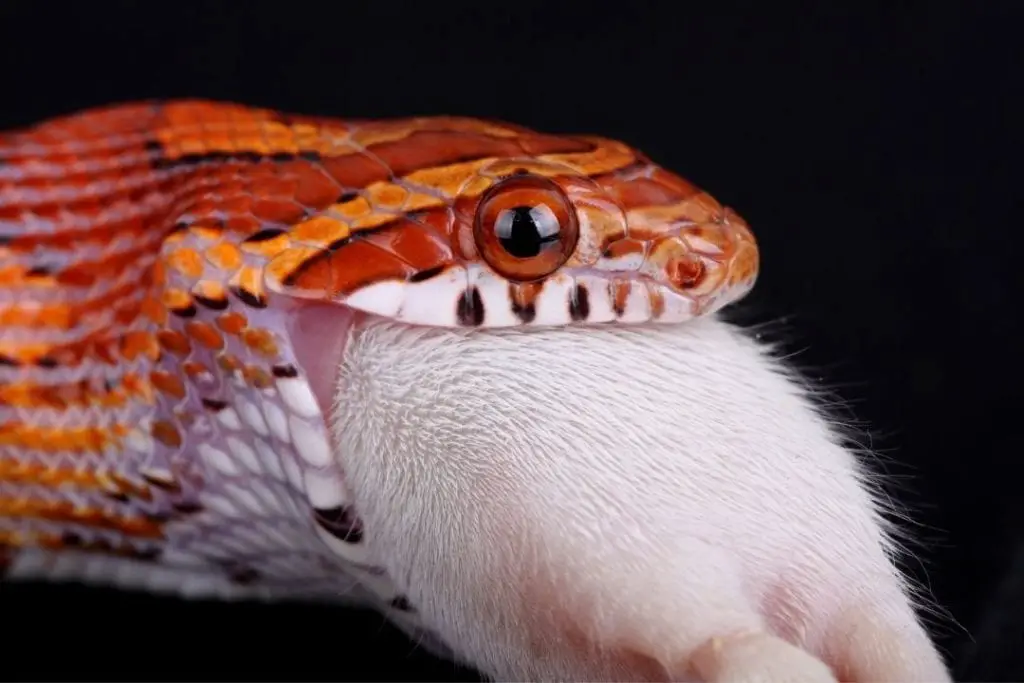
As far as diet, corn snakes are fed on frozen or pre-killed mice. The size of the mouse should be no wider than the width of the head of the snake. Live prey should be avoided since they can fight back and injure or kill your snake.
If you are buying a hatchling, make sure it has taken a frozen and thawed mouse, since some hatchlings will only take lizards. Make sure you only buy prey that has been raised on a good diet.
If your prey was malnourished, your snake will become malnourished. You should also make sure the prey has no parasites since this can be passed onto your snake and harm them. Adults will likely only need to eat every 2 weeks, with hatchlings feeding every week. This depends on the snake, some may want a longer time between feedings.
Your snake should be fed in a separate container to make sure they don’t ingest substrate. Feeding too often can stress the snake and result in a shorter lifespan. If a snake grows too quickly from frequent feeding, that can also shorten its lifespan due to stress. Slow, steady growth results in a healthier snake that will live longer.
Health Issues
The most common health issues for corn snakes in captivity are related to poor care. A rough substrate can cause injury and infection. Poor temperatures can cause immune suppression and infections.
Too much humidity can also cause infection and too little results in poor shedding. If you feed on a particulate substrate like wood shavings, your snake may ingest it and suffer from an impaction.
Wild-caught snakes may have parasites. Poor quality prey can also give your snake parasites. If your snake is showing a change in its skin, any difficulty or strange sounds while breathing, or discharge your snake needs to go to a reptile vet immediately. Keep an eye on feces as well, since a change can indicate an illness.
By keeping up on veterinary care and using proper care, you can make sure your snake lives a long and happy life. A yearly visit to the vet can help catch any health problems early.
Breeding
Poor care of a breeding female can shorten her lifespan.
Before you even consider it, make sure the female is in good health and offer prey more frequently. You will need to induce brumation for successful breeding for both the male and female.
The female will need additional food and nutrients to produce healthy babies. You will also need to provide a proper place to lay her eggs, or she may retain them and damage her health. If this happens frequently despite proper care, you may want to retire her from breeding and keep her solely as a pet.
Continuing to try will shorten her lifespan. If your snakes are healthy, they will be able to breed for around 12 years. Remember that if you want to breed your snakes, you need to make sure there are owners ready for the babies. Each clutch may produce a dozen or more eggs, so be prepared for plenty of babies that need a home.
Everything you need to know about caring for Corn Snakes in captivity:
Read our Corn Snake Care Sheet (Complete 101 Guide)
In Conclusion
Corn snakes can live for over a decade if you follow proper care for your snake. So long as you keep up on care, your snake can be a companion for 15-20 years. Make sure you are prepared for the commitment. If you have any questions, feel free to ask in the comment section.
